
views
Building the Cage
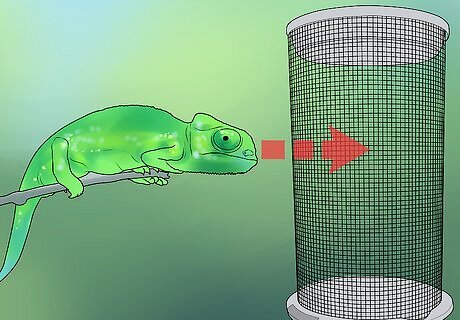
Consider the behavior of your reptile. Think about the type of reptile you have. Does your reptile need water? What type of light does your reptile need? Is your reptile young? How large is the reptile expected to grow? Will the cage be kept inside or outside? The cage should resemble the reptile's natural habitat as much as possible. For example, a chameleon would need a tube cage. Turtles, frogs, and some snakes will need water in the tank. Some reptiles eat other insects and animals such as crickets and mice. Your cage needs to be able to accommodate those animals as well. You do not want those animals escaping into your home.

Choose materials to work with. The materials you choose for the cage will depend on your budget and the needs of your reptile. Cages are typically made using screen or mesh, plastic or wooded, or acrylic or glass boxes. Also consider how often you will need to clean the cage. Unless you have experience working with acrylic and glass, buy pre-cut panels. The panels can be attached together or you can attach the panels to a wood or plastic frame. Plastic cages are more expensive, last longer, and hold heat better than glass cages. Melamine, high pressure particle board with a decorative laminate coating, looks good, holds up well and is easy to clean, but it's heavy. Other options include a good grade of plywood or pre-cut shelving boards. Walls can be made of wood, glass, transparent thermoplastic, or coated wire mesh. Consider building a reptile cage out of existing items, such as an aquarium, old chest of drawers, entertainment center or a refrigerator with the door removed.
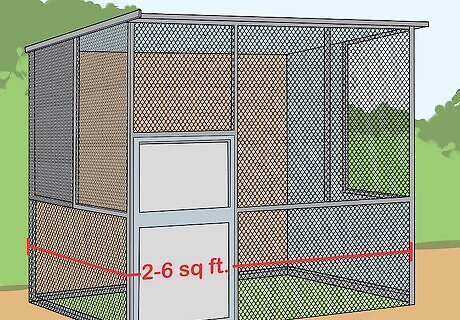
Determine the size of the cage you need. Your reptile should have room to move around and hide in its cage. There should also be enough room to incorporate the necessary lighting, heating, and flooring. Most cages are rectangular in shape. Small reptiles such as leopard geckos and garter snakes need two to six square feet of space. Medium sized reptiles such as pythons need six to eight square feet of space. Small reptiles that move around a lot such as bearded dragons need eight to 32 square feet of space. Large reptiles such as iguanas, tortoises, and constrictors need a closet or room size for a cage.
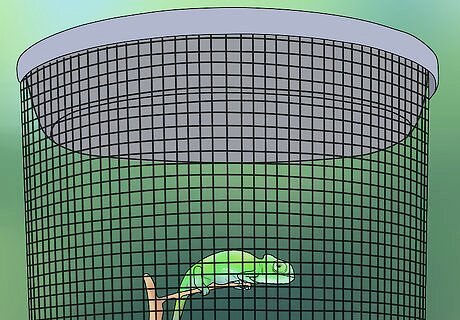
Ventilate the cage. Wire mesh, pegboard, and holes are all ventilation options. For example, screen and mesh are needed for reptiles such as chameleons that need plenty of airflow. The ventilation you choose should be based on the needs of your reptile. Ventilation holes should either be too small for the reptile to escape through or covered with wire mesh, hardware cloth, or black window screen. Don't use wire mesh in snake cages. Pegboard is good if the reptile likes to rub its nose against things. If you are concerned about the reptile's nails injuring the cage, you can use quarter-inch plastic coated hardware cloth.
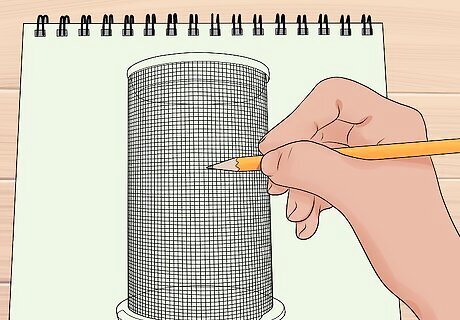
Create a sketch of the cage. Once you have chosen the size of the cage and the materials you plan to use, make a sketch of the cage you plan to build. This will help you determine exactly what you need to buy, and help you develop a game plan for building the cage. Also measure the area where you plan on placing the cage to make sure that there will be enough room. Make a list of the tools that you will need such as a chisel, drill, saw, etc. Also gather any screws, hinges, glue, or adhesive that you may need. Plan your approach to building the cage. Decide what pieces you will put together first. Will you use pre-cut materials or cut your own?

Construct the cage. Attach the walls of the cage using wood or glue. Plexiglass and wood will require screws. Create cut outs for ventilation as well. Construct a door for the cage and apply hinges or latches to the door frames. Doors should always open sideways or down. If you have to hold the door up with one hand, cleaning the cage or caring for your reptile will be more difficult. Put the door in a place that allows you to reach all areas of the cage easily. A badly placed or sized door may make it more difficult for you to care for your reptile. Do not place hinges on top of the door. Make sure that all of the hinges, screws, lids, and doors are sturdy. You do not want your reptile to escape from the cage.
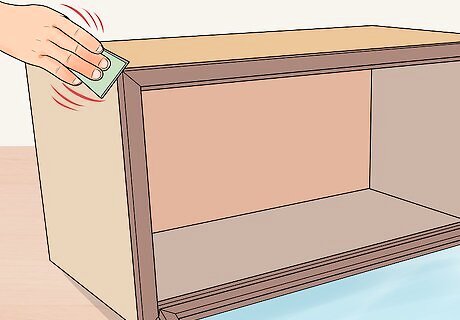
Add any finishing touches. Sand down any rough areas or sharp edges. Seal the bottom of the cage so substrate, water and excrement don't leak out. You can use non-toxic silicone sealant and a durable plastic sheeting. Cover the raw edges of any wire mesh inside the cage. If you plan to paint or decorate the wood, stain bare wood and apply a topcoat, such as polyurethane, to protect it. Be sure to air it thoroughly afterward so fumes don't sicken your reptile.
Preparing the Habitat

Choose the substrate (flooring). Flooring choices include sand (fine beach sand, playground sand, silica sand), gravel/stones (lava rock, pea gravel, polished stones), wood and paper products (bark, mulch, butcher paper, newspaper, paper towels, shavings), soils and mosses (sphagnum moss, potting soil, Spanish moss), or litter (cat litter, clay litter, alfalfa pellets). The type of substrate you use will depend on the needs of your reptile. When in doubt, seek professional advice from a reptile specialist. Some substrates, for example sand, can readily cause gut impactions if the lizards eats some when feeding off insects. Wood is best for arboreal species of reptiles, such as lizards, that do not spend a lot of time on the ground. Paper towels and newspapers can be shredded and placed on the bottom of the cage. These materials are inexpensive and are easy to clean up, but they do not help with odor control. Coconut fiber is good for reptiles that need a high humidity environment and helps control odor. It is also good for reptiles that like to burrow and hide. Moss is good for high humidity reptiles and is good for reptiles that like to burrow as well. Sand works for desert species reptiles; however, it can be harmful if large amounts are ingested. Never use soil, grass, bark or other substrates from the park or your yard. They may contain organisms and bacteria that may be harmful to your reptile.
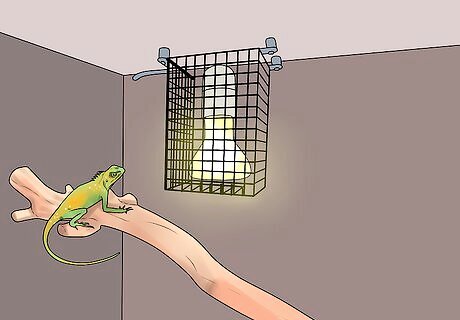
Add heat to the reptile cage. All reptiles need an external heat source because they cannot control their own body temperature and many of them come from warm climates. If your reptile spends most of his time on branches or in the upper portion of the cage, he will need basking heat. If your reptile spends most of his time on the ground, you will need ground heat. All cages need a thermometer as well. The ideal temperature is between 20 and 32 ºC (68 to 89.6 ºF). Ceramic heaters, basking lamps, and basking lights can be used to provide basking heat. Basking lights are used to create a desert environment. Basking lamps have time limits (14 hours in the summer and 8 hours during the winter) and must be monitored. Heat mats and pads, hot rocks, and heat cable and ropes provide ground heat. Heat mats and pads provide constant heat. Hot rocks are best for nocturnal reptiles, but may malfunction from time to time. Choose your hot rocks, mats, and pads carefully. Some mats get too hot and the reptile could burn his belly lying on it. Heat cables and ropes are flexible and can be wrapped around different objects. Heat cables and ropes get very hot. You will need to use a rheostat to monitor the temperature. Do not place a basking light above a heat pad. This can cause the temperature of the heat pad to reach unsafe levels and can hurt your reptile.

Provide ultraviolet (UV) light. Most reptiles need full spectrum lights that provide either UVA or UVB light. Proper lighting will keep your reptile healthy and happy and provide adequate levels of Vitamin D3 and calcium. The specific light you use will depend on the type of reptile you have. Lights should be placed 12 to 18 inches from where the reptile will lie. Lights that provide 4% to 10% of radiation as UVB are best, depending on the animal. You will most likely need at least two UV bulbs. It is best to switch your lights on and off — including the UV — to mimic day length in the habitat in which your lizard lives in the wild. Lights should be replaced every six months, regardless of whether they appear to be functioning. This is because the UV levels emitted drop off markedly after six months. Incandescent lights will add heat to a cage. While you can use this type of light as a heat source, take care that it doesn't make the cage too hot. Install lights outside the cage if possible. If you choose to install a bulb inside the cage, build a shield around it so the reptile doesn't come into contact with it.

Furnish the cage with items that simulate your reptile's natural environment. Put in tree branches for species that like to climb and flat rocks for those who enjoy basking under a heat lamp. Give your reptile places to hide, ideally one hide at the warm end and one hide at the cool end of the cage. Purchase the furnishings from a pet store or trusted online retailer. Branches, sticks, and leaves from our natural environment may be harmful for your reptile. Consider your reptile's water and food needs. Some need a large dish they can climb into, while others need a drip bottle to drink from.
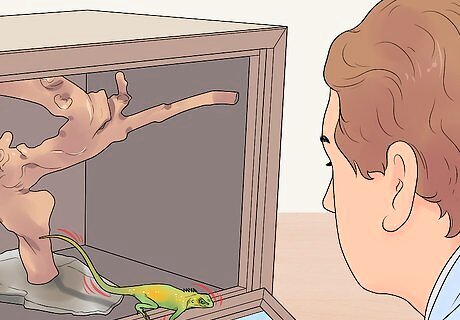
Observe your reptile in the cage. Place your reptile inside and observe his behavior closely to make sure he is comfortable. A reptile that acts strangely or is constantly trying to escape may be in distress, requiring that you make adjustments or build a more suitable cage.




















Comments
0 comment